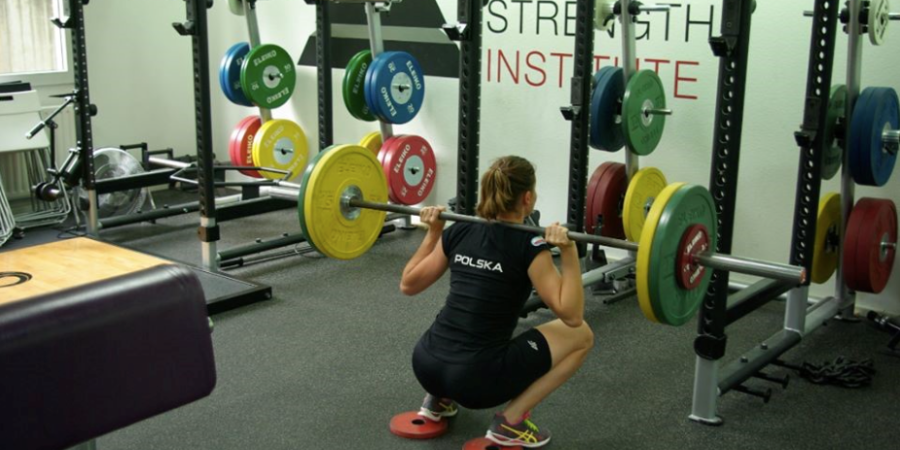
The Butt Wink has its Advantages…
Over the last years I have been asked numerous times about the Butt Wink.
My answer is simple:
The Butt Wink is to strength training, what butter is to nutrition. It has a bad reputation for no substantial reason…
What is the Butt Wink?
A brief posterior tilt of the pelvis in the bottom position of the squat is called the Butt Wink.
At first it seems to increase the load on the lumbar spine (LS).
However, the exact opposite is the case.
The Butt Wink has 3 Advantages:
1. Increased Recruitment of the Vastus Medialis
The range of motion (ROM) in knee flexion increases through a slight posterior tilt of the pelvis in the bottom position of the squat. This ensures a higher recruitment of the Vastus Medialis, the teardrop shaped portion of the Quadriceps on the lower inner thigh.
The more fibers of the Vastus Medialis are recruited, the stronger it gets. The stronger the Vastus Medialis, the more stable is the knee joint as the Vastus Medialis is one of two primary muscles that stabilize the knee joint.
2. Dynamic Contraction of the Lumbar Erector Spinae
In most strength training exercises the lumbar Erector Spinae is contracted isometrically in its stabilizing function. The Butt Wink, a slight posterior tilt of the pelvis in the bottom position of the squat, leads to a dynamic contraction of the lumbar Erector Spinae.
That’s one way to strengthen the Erector Spinae in this area. The strength of the lumbar Erector Spinae is crucial for jumping and sprinting speed, especially in the most relevant distance in team and combat sports – 0-5 meters.
3. Reduced Compression of the Lumbar Spine
The compression of the LS in the squat is primarily determined by the horizontal distance of the center of mass (barbell) and the fifth lumbar vertebra (L5). This means the more upright someone is in the squat, the shorter is the horizontal distance between the barbell and L5, and the less compression of the LS.
The Butt Wink, a slight posterior tilt of the pelvis in the bottom position shortens the horizontal distance between the barbell and L5, and therefore reduces the compression of the LS.
A Butt Wink does not equal a Butt Wink.The posterior pelvic tilt over the last 15cm of the ROM is beneficial. An earlier pelvic tilt points out a deficit in dorsiflexion of the ankles, which has to be corrected before implementing Barbell Squats into any training program. Secondly an upright torso is crucial, most efficiently ensured by correct positioning of the elbows – directly vertical under the barbell.
What if the Butt Wink starts very early?
Optimization of a poor squat form due to an early rounding of the spine (don’t confuse that with the brief tilt of the Butt Wink), lack of depth and a forward bent of the upper body should be primarily improved by increasing the flexibility of the gluteal complex as well as dorsiflexion of the ankles. In this case not the Butt Wink itself is the problem but primarily the mobility of the ankles and the hips.
Over the last years I´ve observed thousands of repetitions of the squat – live at the YPSI and on video. A minimal Butt Wink even occurs at elite level – for instance the Bulgarian Weightlifter Stefan Botev, who has back squatted 380kg and front squatted 320kg at 95kg bodyweight or Russian Weightlifting Champion Dmitry Klokov who has done a Klokov Squat with a 7610 Tempo with 250kg at 108kg bodyweight. And neither leads to short-, middle- or long term back issues.
The exact opposite is true. An optimal squat with a minimal Butt Wink is one of the best exercises to keep your knees and back healthy over a long time…
Conclusion: A Butt Wink has its advantages. A full squat with a Butt Wink is superior to a half squat with no Butt Wink.
Picture: European Champion in Shorttrack Speedskating Parycja Maliszewska squats at the YPSI with a minimal Butt Wink.
